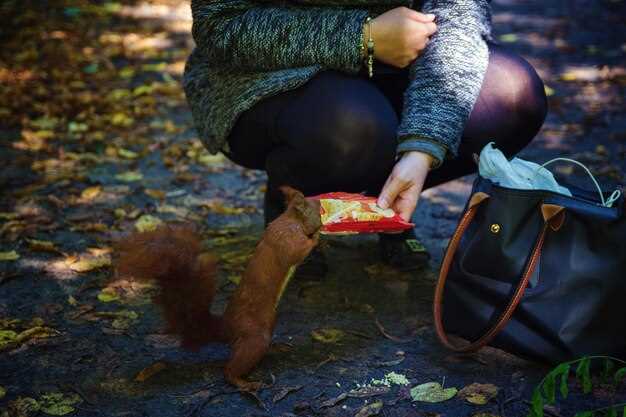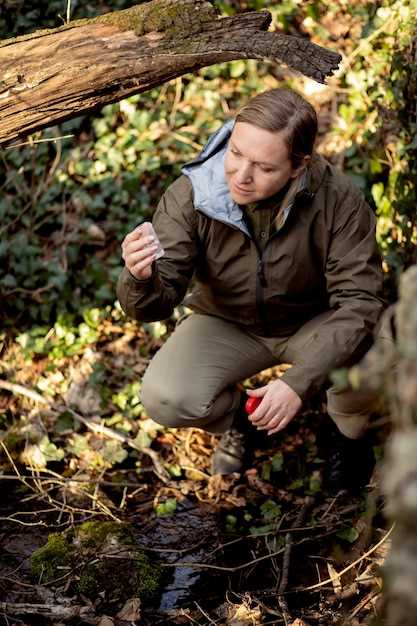
When embarking on an outdoor camping adventure, ensuring your safety is of utmost importance, particularly in areas inhabited by wildlife. Understanding how to coexist with the creatures that share these natural spaces is crucial for both your protection and the well-being of the wildlife. Camping in the great outdoors offers a unique opportunity to connect with nature, but it also requires a level of preparedness and awareness that not all campers are familiar with.
Wildlife encounters can range from fascinating to dangerous, depending on the circumstances. It’s essential to adopt specific practices that minimize risks and promote safety during your camping experience. Being proactive can help prevent conflicts with animals, ensuring an enjoyable and safe environment for everyone within your camp. From proper food storage to recognizing animal behaviors, understanding these tips can significantly enhance your wilderness experience.
This article will provide practical guidelines to help you navigate the challenges of camping in wildlife-rich areas. By following these tips, you can enjoy the beauty of the outdoors while maintaining personal safety and respecting the natural habitat of wild animals. Let’s delve into essential practices to ensure a secure and responsible camping experience.
Understanding Animal Behavior to Avoid Encounters
Understanding wildlife behavior is crucial for ensuring your safety while camping. Different species exhibit various patterns of activity, feeding, and social interaction that can inform your approach to avoiding unwanted encounters.
Many animals are most active during dawn and dusk, known as crepuscular activity. During these times, they are foraging for food, which increases the likelihood of crossing paths with campers. To minimize risk, plan your hikes and outdoor activities during midday when animal activity is typically lower.
While some animals may appear harmless, their behavior can change rapidly if they feel threatened. For instance, a mother bear with cubs can be very protective, and approaching her could lead to aggressive encounters. Always maintain a safe distance from any wildlife and observe them from afar.
Another important aspect of animal behavior is their feeding habits. Many wild animals are attracted to food sources, including human food and garbage. Thus, it’s essential to store food securely in bear-proof containers and avoid cooking or eating in your tent. Proper food storage not only protects your supplies but also prevents animals from associating your campsite with easy meals.
Additionally, some animals have specific territories they defend against intruders. Understand that approaching or disturbing these animals can lead to confrontations. Familiarize yourself with the local wildlife and their habits before your trip, as this knowledge can help you identify potential risks and act accordingly.
In summary, being aware of and understanding animal behavior is a key component of outdoor safety. By recognizing the patterns and tendencies of wildlife, you can take proactive measures to reduce the chances of unwanted encounters and ensure a safe camping experience.
Proper Food Storage Techniques to Deter Wildlife

When camping outdoors, ensuring safety from wildlife starts with proper food storage. Animals are often attracted to the smell of food, which can lead to dangerous encounters. Implementing effective storage techniques not only protects you but also prevents harm to wildlife.
Use Bear-Resistant Containers: In areas known for bear activity, utilize bear-resistant food storage containers. These durable products are designed to withstand attempts by wildlife to access your food, keeping it secure and out of reach.
Hang Food Safely: If bear-resistant containers are not available, hanging food in a bear bag is an effective alternative. Choose a sturdy tree branch at least 10 feet off the ground and 4 feet away from the trunk. Use a rope to hoist the bag high, ensuring it is inaccessible to animals.
Keep Food in the Car: If you are camping in a designated campground, storing food in your vehicle can be a safe option. Ensure all windows and doors are securely closed to prevent wildlife from gaining access.
Minimize Odors: To deter wildlife, store food in airtight containers that minimize scents. Properly sealing your food not only keeps it fresh but also lessens the likelihood of attracting curious animals.
Dispose of Waste Properly: All food scraps and waste should be disposed of in designated trash bins that are wildlife-proof. If no bins are available, pack out all waste to minimize attractants in the camping area.
Cook Away from Sleeping Areas: When cooking, set up your cooking station a safe distance from your tent. This reduces the chances of wildlife being attracted to food smells near your sleeping area.
By following these proper food storage techniques, you can significantly enhance safety while enjoying your camping experience. Protecting both yourself and wildlife is key to a harmonious outdoor adventure.
Safety Measures During Wildlife Sightings in Campsites

When encountering wildlife at campsites, it is essential to prioritize your safety and the well-being of the animals. Here are some crucial measures to follow:
Stay Calm: Your reaction to a wildlife sighting can influence the animal’s behavior. Remaining calm and composed is vital to avoid startling the creature.
Keep Your Distance: Always observe wildlife from a safe distance. Use binoculars or a zoom lens to get a closer look without approaching. Disturbing their space could provoke defensive behavior.
Make Noise: If you find yourself too close to an animal, gradually move away while making gentle noise to signal your presence. This can help animals understand they are not in danger and encourage them to retreat.
Secure Food and Trash: Keeping food sealed and trash stored properly reduces the likelihood of attracting wildlife close to your campsite. Use bear-proof containers when available and dispose of waste responsibly.
Never Feed Wildlife: Feeding animals can alter their natural behaviors and lead to dangerous situations. It can also make them reliant on human foods, which is harmful to their health.
Know the Species: Familiarize yourself with the wildlife in the area you are camping. Understanding their behavior, habitat, and potential risks can prepare you for safe interactions.
Have an Emergency Plan: In case of aggressive encounters or unforeseen wildlife behavior, have a plan in place. Ensure all campers know how to respond safely, whether by retreating or seeking immediate help.
Use Bear-Specific Precautions: In bear country, make noise while hiking, travel in groups, and carry bear spray as a deterrent. Learn how to use it properly in case of an encounter.
Implementing these safety measures will enhance your camping experience while promoting a respectful coexistence with the wildlife around you.



